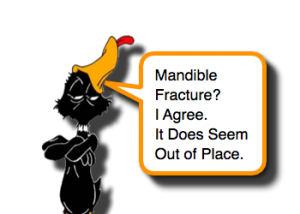Back in 1927, Werner Heisenberg postulated the uncertainty principle, which states that he more precisely the position of some particle is determined, the less precisely its momentum can be known, and vice versa. This had deep implications in the field of particle physics that resonate to this day. So much so, that I’m going to go as far as to say I feel that principle every single day in my practice. Now, i’m not saying Physiotherapy is as complex as particle physics — I mean, I’m sure Heisenberg never had to deal with someone telling him “can you put my back into place?”

Anyway, I was talking about uncertainty in our practice. Quite a large amount of research has been done on how much uncertainty is acceptable in (mainly emergency) medical practice. Which is understandable: you want to be sure of what you’re doing when the two possible outcomes are the person in front of you having breakfast in the next morning or not.
In our daily practice, however, things are usually not as drastic. Still, we continuously have decisions to make. And in so, so many of these decisions, I find myself with the same answer in my head – I’m not sure. I’m continuously baffled when I see physios say things like “The proximal third of your gluteus maximus is not activating in the later stages of your stance phase during running, which is making you push harder with the contralateral upper limb to keep the running momentum. The strain on your shoulder is influencing the posteroanterior-anteroposterior chain, and that’s why your foot hurts.”. This was a pretty ridiculous example, but it helps me get the point across (disclaimer: I am in no way denying interregional dependence).
Now, I mostly deal with athletes and in a first-contact setting. So, when I get someone with a complaint, I ask about what happened, do my fancy tests (or even clusters – clusters, I tell you! – of tests), and then get the obvious question: “So what is it?”. Naturally, in some cases, it’s pretty clear:

However, in more cases than I care to admit, what I end up telling them is “Well, you have some features that point to the possibility of A, B, or C, so we’re going to start managing by doing X, Y, and Z and we’ll see how that modifies your complaints”. Then I see how disappointed they are by not having a more conclusive answer and I die a bit on the inside. The same thing goes for the “So when will I be able to play again?” question. Sure, we have typical time frames, but especially in more long-term injuries, I just find myself being unsure about give them a honest sure-fire answer. Likelihood ratios and outcome measures start going through my head and all I feel like I can say, to quote from Anchorman, is “60% of the time it works… every time!”
Is this acceptable? Is it preferable to tell patients a sure-fire diagnosis and that we’re really really sure our evaluation is accurate and our intervention is going to work (even when we’re not so sure ourselves)? I’m… uncertain.
P.S. – I’m going to take this opportunity to postulate the Physiotherapy Uncertainty Principle:
“The more tests and measures you read about, the less sure you feel about what the patient actually has”